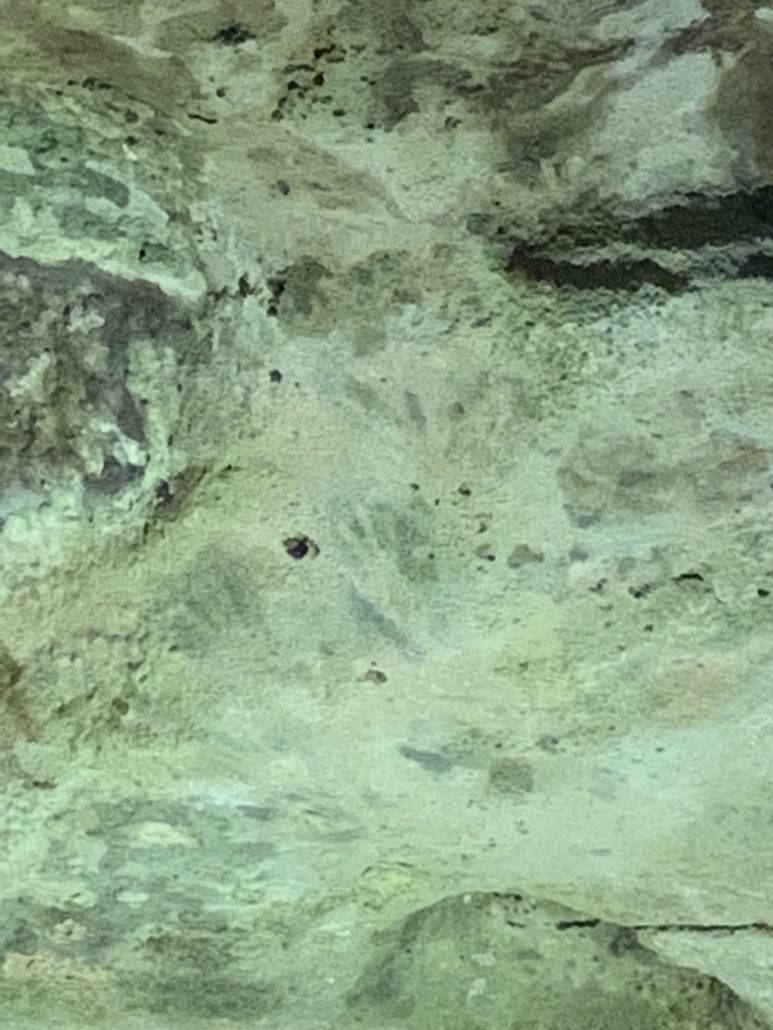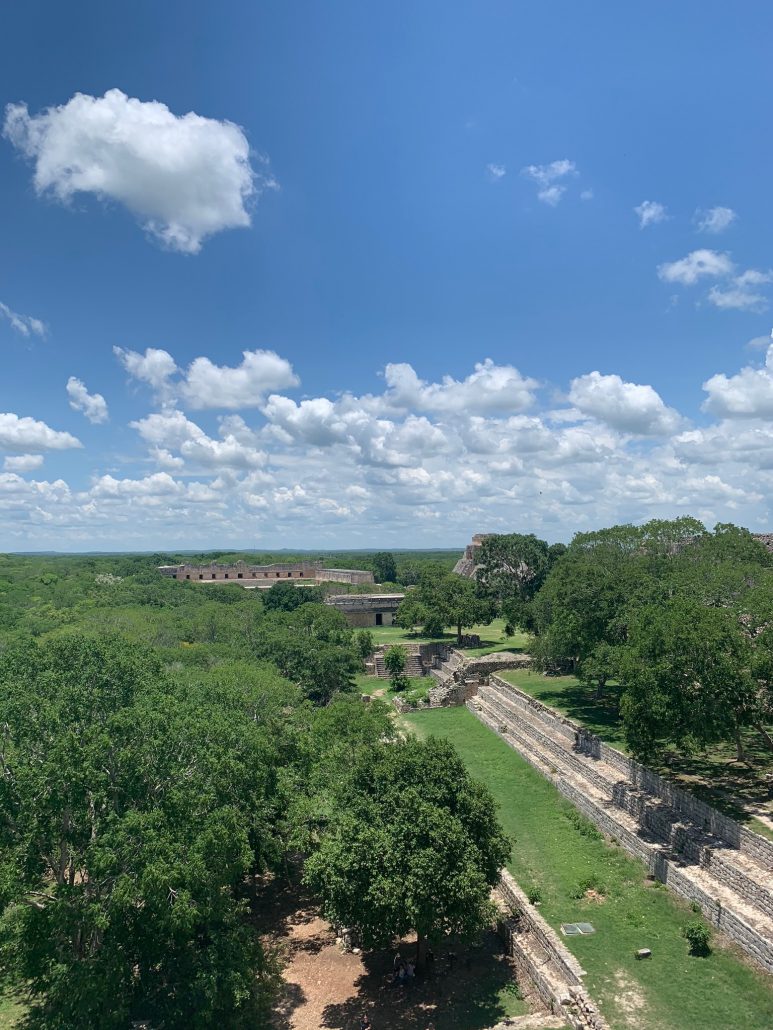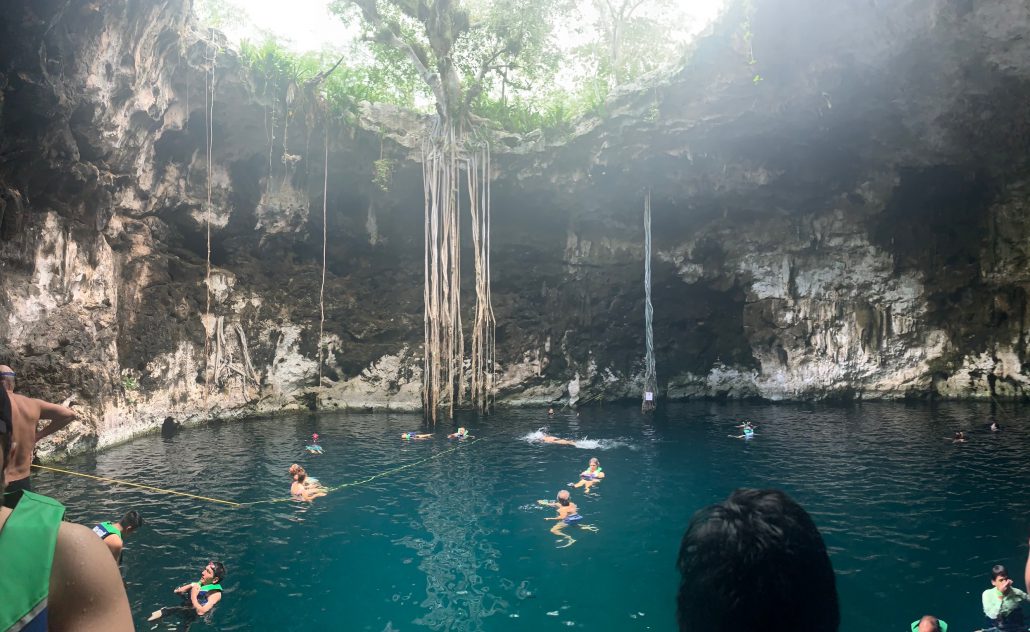By Andrea Zheng
This past week we had our first weekend of excursions! Every week, we have a set of places that we go to around the Yucatan peninsula and this week it was Lol-tún, Uxmal, and Cenotes Cuzamá. Our first destination, Lol-tún, is a cave that translate to “Flower Stone” in the Mayan language. There were many uses for this cave, including as a shelter to hide in and a source of clay, which the ancient Mayans used to make tools. There is also physical evidence of the Mayans use of this place because there are hand prints on the cave walls along with drawings of animals.

One of the coolest things in Lol-tún is when all the lights go off. Although the Mayans used to move through the cave using torch light, the cave is now illuminated by path lights so that tourists don’t get lost in the dark. But there was a moment when our tour guide turned off all the lights and it was one of the craziest experiences ever.
I had never before been somewhere where I had my eyes wide open but still could not see a thing, as there is normally at least some light filtering in. Not a single person moved when it was dark because you lose all sense of your body in space.

Back in the sunlight, we continued on to our second location, Uxmal. Uxmal is an ancient Mayan city that translates to “three times built” in the Mayan language. Something that I learned during our tour was that the pyramid that we saw on the outside wasn’t the only pyramid in that exact spot.
When the Mayans wanted to build a new pyramid, instead of building a new one, they would just build around the old one, incasing the old pyramid into the new one. This means that there is a Russian nesting doll situation with the pyramids that we see today.

We were also able to climb up the tallest pyramids, which gave us an incredible view of the area surrounding Uxmal. Because I know that I’m really clumsy and prone to tripping, I was very wary to climb the EXTREMELY steep pyramid. Thankfully, I made it down unscathed and was able to continue onto the next day’s excursion, Cenotes Cuzamá.

Cenotes are natural pits of water that are below ground. There are a lot of cenotes in the Yucatan peninsula, but only some are accessible to the public. (Apparently, there was even a cenote in the Costco parking lot in Merida but I never got to see it). Some of the more accessible cenotes have been commercialized and have become popular tourist destinations, like the Cenotes in Cuzamá.

Here, there were four different cenotes, so we were able to walk to each of the different ones and float around for a little bit. Apparently all cenotes are connected by underwater tunnels, but I wasn’t about to dive down and test that theory.
It was a fun (and tiring) weekend and first week here in Merida so I’m looking forward to getting some sleep before tackling another week.
Andrea Zheng studied abroad in Merida in Summer 2019. https://ieo.ucla.edu/travelstudy/Span-Mexico/



